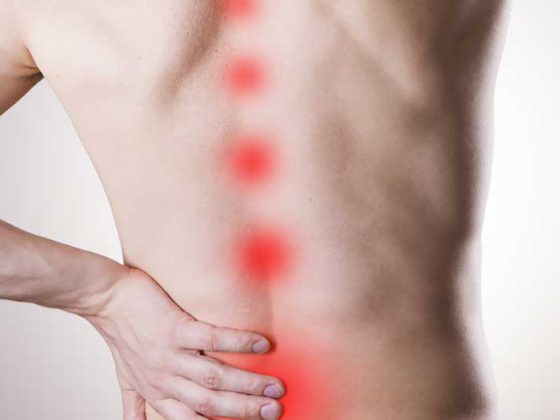Telemedicine is a subset of eHealth, which is understood as the use of electronic (digital) technologies in medical care as well as in the broader healthcare system. The sub-areas are divided into eCare (telemedicine), eAdministration (administration), ePrevention (preventive care), eResearch (research) and eLearning (education and patient training). Telemedicine per se is the use of digital technologies to exchange medical information across a distance; teledermatology is concerned with the treatment of diseases of the skin and adjacent mucous membranes.
Telemedicine is a subset of eHealth, which is understood as the use of electronic (digital) technologies in medical care as well as in the broader healthcare system. The sub-areas are divided into eCare (telemedicine), eAdministration (administration), ePrevention (preventive care), eResearch (research) and eLearning (education and patient training) [1]. Telemedicine per se is the use of digital technologies to exchange medical information across a distance; teledermatology is concerned with the treatment of diseases of the skin and adjacent mucous membranes.
Basically, the technical systems are based on two different applications: store-and-forward technology (SAF) or real-time application. With SAF technology, the transmission of findings is staggered, with the latter in real time (example: telephone contact, video conference). A teledermatology consultation includes data acquisition (digital or video camera, PC, smartphone, apps), data transmission (real-time or SAF), data use (documentation, diagnostics, therapy planning and/or evaluation, research), and data archiving (quality- and privacy-assured) [2]. In addition to these forms of technical solutions, there are still countless medical and health apps, which are not considered in this article.
Wound healing in the foreground
In principle, all dermatological diseases are suitable for the use of teledermatology; this is now well documented for psoriasis vulgaris, atopic dermatitis and chronic wounds [1].
The treatment of chronic wounds puts the healing of the same in the foreground. The treatment process involves more than just regular dressing changes. At the beginning there is the diagnosis with definition of the wound genesis, from which the therapy concept is derived. Therapy includes both causal (e.g. varicose vein surgery, arterial reperfusion, etc.) and symptomatic (local therapy) treatment. In the further course, regular dressing changes, evaluation of the healing success as well as possible therapy adjustments are necessary. This should be done with controls in specialized centers or with experienced wound care practitioners; however, the appropriate expertise is not always immediately available for these patients at all times and in all places. Often, time-consuming journeys have to be made, which also cause corresponding costs and have a negative impact on the patient’s overall quality of life. These circumstances/disadvantages can be positively influenced by using teledermatology [3].
At our department in Graz, we were able to make the first experiences with teledermatology in the treatment of chronic wounds already with the beginning of the 2000s [4]. In our outpatient clinic, face-to-face assessment and treatment were performed and digital photographs, relevant patient history data, and also examination results were electronically forwarded to an expert. Basically, there was a high agreement of the results, but for the therapy recommendation further findings such as general condition, relevant previous diseases and also the information concerning the response to the previous therapy were missing. In addition, no statement could be made regarding the acceptance of the eVisit by patients or the caring staff; a possible cost reduction for the healthcare system was also not taken into account. These open questions subsequently resulted in a study considering these points [5]. In cooperation with practicing specialists and practitioners as well as home health care, a 3-month teledermatological follow-up of the patients was performed after the initial visit in our outpatient clinic. Standardized data sheets were also transmitted with the digital photos so that the expert could obtain a comprehensive picture of the disease concerning the wound and the patient. In addition, the practitioners could also ask questions. It was found that the majority of the groups of people involved were very satisfied; patient satisfaction tended to correlate with cure rate, the latter being in line with our previous experience from everyday life and the literature [6]. Interestingly, physician visits or outpatient clinic visits were reduced from 64 before study inclusion to 9 during the study, which translated into a 46% reduction in transportation costs, while maintaining quality of care. With the progress of the improvement of digital media incl. cell phones, another study was conducted [7]. The question was asked whether patients/relatives can be supported in therapy by self-administration of teledermatology (telegroup and control group with regular outpatient visits). In addition, the time saved by eliminating outpatient visits was evaluated. It was also shown in this study that outpatient visits can be replaced by teledermatology visits (1.6 visits/patient/month versus 0.6 televisits/patient/month); 6 of the 20 telepatients were managed exclusively by televisits. Overall, this led to an improvement in the quality of life of patients with chronic wounds as well as time savings for the physicians providing care and the patients. Reducing transportation costs can ease the burden on the healthcare budget.
COVID-19 as a driver for telemedicine
Subsequently, the integration of telemedicine in clinical practice has increased significantly and made giant strides with the COVID-19 pandemic starting in 2020, especially in the area of wound care. Peter Elsner describes that during the pandemic, opportunities for personal care of dermatologic patients were significantly limited. However, these could be at least partially compensated by the expansion of teledermatology services. This experience should be used for further improvements in use and acceptance by patients and dermatologists [8]. Chen et al. have published a systemic review and meta-analysis regarding telemedicine and chronic wound management 2020. Using a corresponding literature search, they found that telemedicine care of wound patients is not inferior to, and can be equated with, conventional live visits in terms of either efficiency or safety [9]. Chanussot-Deprez et al. also conclude in their review that telemedicine-assisted wound care does not lead to a loss of treatment quality and that costs are reduced while patients’ quality of life is improved [10].
All these experiences, observations and study results have led to the preparation of the German S2k guideline Teledermatology under the leadership of Mathias Augustin with the participation of the professional societies from Germany, Austria and Switzerland, which was published in 2020 and has its validity until 2024 [11]. This provides an evidence-based recommendation for the use of teledermatology in daily practice for the field of chronic wound management, among others. In the case of chronic wounds, both diagnosis and therapeutic care can be provided teledermatologically; however, the necessary clinical, instrumental diagnostic, and anamnestic information must be available for the primary diagnosis of acute and chronic wounds. Zarchi et al. were able to show in Denmark with a randomized, prospective study that a significantly higher healing rate is achieved in patients with leg ulcers when supportive teledermatological care is provided in addition to routine outpatient treatment [12].
For everyday use in the practice, it can therefore be said that digital reporting can be equated with face-to-face reporting, especially for existing patients. As a handy hint, the SAF mode recommends a digital photo of each:
- lying dressing and secondary dressing before acceptance,
- Wound immediately after removal of the dressing,
- Contact surface of the wound dressing and
- of the wound after cleaning.
The use of a scale, possibly incl. Color scaling, in which the pain value can also be entered, proves to be supportive [1]. However, it must always be taken into account that basic information is transmitted in addition to the corresponding image quality.
Summary
Teledermatology diagnostics, preferably SAF method, and chronic wound care is feasible and evidence-based underpinned. For the efficiency and safety of the diagnosis, it is essential to have the appropriate image quality as well as the relevant current information on the course of the wound and the patient’s general condition. This form of treatment makes it possible to obtain regular consultations from experts without any loss of quality – even from areas not close to the center – with an improvement in the quality of life for patients and a reduction in costs for the healthcare system. In the meantime, there is a high level of acceptance among patients and users.
Take-Home Messages
- The treatment of chronic wound patients requires appropriate knowledge.
- Regular follow-up with possible therapy adjustment at special centers is required.
- Teledermatology enables this without loss of quality, improvement of quality of life and reduction of costs.
Literature:
- Augustin M, et al: Practice of teledermatology. J Dtsch Dermatol Ges 2018; 16 (5): 6-57.
- Reinders P, et al: Fields of application of teledermatology. Dermatologist 2022; 73: 47-52.
- Gamus A, et al: Telemedicine versus face-to-face care for treatment of patients with lower extremity ulcers. J Woud Care 2021; 30 (11): 916-921.
- Salmhofer, et al: Wound teleconsultation in patients with chronic leg ulcers. Dermatology 2005; 210: 211-217.
- Binder B, et al: Teledermatological monitoring of leg ulcers in cooperation with home care nurses. Arch Dermatol 2007; 143 (12): 1511-1514.
- Nelzen O, et al: Long-Term prognosis for patients with chronic leg ulcers: a porspective cohort study. Eur J VASC Endovasc Surg 1997; 13 (5): 500-508.
- Eber E, et al: Mobile teledermatology in the treatment of chronic ulcers. Dermatologist 2019; 70: 346-353.
- Elsner P: Teledermatology in the era of COVID-19 – a systematic review. J Dtsch Dermatol Ges 2020; 18 (8): 841-847.
- Chen L, et al: Telemedicine in chronic wound management: systemic review and meta-anlysis. JMIR Mhealth Uhealth 2020; 8 (6): e15574.
- Chanussot-Deprez C, et al: Telemedicine in wound care: a review. Adv Skin Wound Care 2013; 26 (2): 78-82.
- Augustin M, et al: S2k guideline Teledermatology 2020; www.awmf.org/leitlinien/detail/II/013-097.html.
- Zarchi K, et al: Expert advice provided through telemedicine improves healing of chronic wounds: prospective cluster controlled study. J Invest Dermatol 2015; 135 (3): 895-900.
DERMATOLOGIE PRAXIS 2022; 32(4): 6-8











